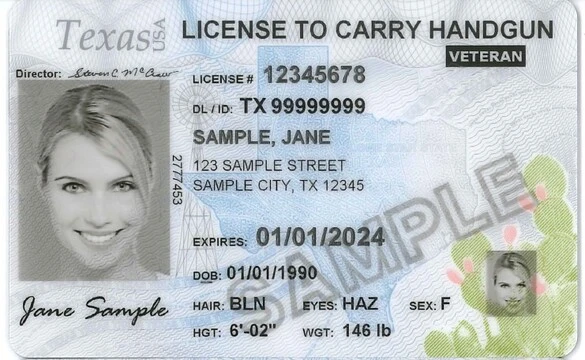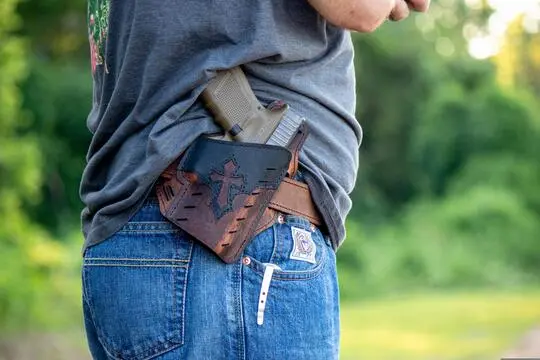When we talk about Texas's License to Carry Laws, the conversation often revolves around the rights of the individuals to bear arms. However, an often overlooked but crucial part of this law lies in Article 14.03(h) which outlines the peace officers' right to disarm a person. This article section holds immense significance in maintaining a balance between individual rights and public safety.
An In-Depth Analysis of Article 14.03(h)
Article 14.03(h) of the Texas Code of Criminal Procedure details specific circumstances under which a peace officer has the authority to disarm an individual. It is divided into three essential elements each providing a unique context for when the officer can exercise this power.
The first element, 14.03(h)(1), gives a peace officer the authority to disarm a person anytime they reasonably believe it is necessary for the protection of the person, officer, or another individual. In such situations, the officer must return the handgun to the person before leaving the scene if the person is determined not to be a threat and has not committed an arrestable violation.
The second element, 14.03(h)(2), allows a peace officer to temporarily disarm a person entering a nonpublic, secure portion of a law enforcement facility, given there's a gun locker or other secure area available. The officer is required to return the handgun to the person immediately after they leave the nonpublic, secure portion of the facility.
Finally, 14.03(h)(3) provides the definitions for "law enforcement facility" and "nonpublic, secure portion of a law enforcement facility" as laid out in Section 411.207, Government Code.
Scrutinizing 14.03(h-1): Peace Officer's Discretion and Reasons to Disarm
Before we delve further into the role of peace officers, it's worthwhile to consider the reasons and situations in which an officer might find it necessary to disarm an individual, as dictated by 14.03(h-1). This part of the article provides the officer with a significant amount of discretion, which is exercised based on the officer's training, experience, and the specific circumstances of the situation.
Consider a situation where an officer has been called to a heated dispute at a private residence. Upon arrival, the officer encounters an individual who has a License to Carry and is currently armed. If the individual is agitated, non-compliant, or the officer perceives that the situation could escalate, the officer might find it necessary to disarm the individual to protect all parties involved. The officer would then be obliged to return the firearm before leaving the scene, provided the individual has not committed an arrestable offense and is not considered a threat.
In another scenario, suppose an individual with a License to Carry enters a nonpublic, secure portion of a law enforcement facility, such as a police station or county sheriff's office. The presence of an armed individual in these sensitive areas might pose an undue risk to officers and civilians alike. In this instance, 14.03(h-1) permits the officer to temporarily disarm the individual, storing the firearm securely until the individual is ready to depart.
These situations exemplify the rationale behind 14.03(h-1) – it serves to mitigate potential threats without infringing upon an individual's lawful right to carry.
Understanding the Role of Peace Officers
The role of a peace officer in Texas is multifaceted. They are entrusted with the responsibility of maintaining law and order, ensuring public safety, and protecting individuals' rights, including those related to firearms. When it comes to disarming individuals as per 14.03(h), peace officers must navigate this balance of duty and rights with utmost caution.
The Concept of Law Enforcement Facilities in the Context of 14.03(h)
Within the framework of 14.03(h), the concept of a law enforcement facility and the distinction between public and nonpublic, secure portions are paramount. These terms, defined in Section 411.207, Government Code, play a crucial role in determining the circumstances under which a peace officer may temporarily disarm an individual. The provision of gun lockers or other secure areas is also a prerequisite to exercising this right, emphasizing the importance of infrastructure in law enforcement facilities.
Balancing Individual Rights and Public Safety under 14.03(h)
Balancing individual rights to carry firearms and the overarching need for public safety is a delicate task. Through the provisions of 14.03(h), Texas's License to Carry Laws strike a balance by empowering peace officers to disarm individuals under specific, defined circumstances, while also outlining the requirements for the return of the firearms. This maintains individual rights while also ensuring the safety of the public and the officers involved.
Conclusion
Understanding Article 14.03(h) in the Texas License to Carry Laws offers insight into how the state of Texas navigates the complex issue of firearm possession and public safety. It reflects the balance struck between an individual's right to bear arms and the broader goal of maintaining public safety. Peace officers, in their crucial role, have the authority to disarm individuals under defined circumstances, a provision that underscores their responsibility in managing this delicate balance.




